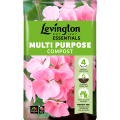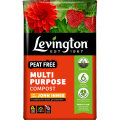If you’re a foodie with a knack for stirring out a pesto dish, then what better way to add a personal touch to a home-cooked meal than with your own homegrown herbs?
Basil, thyme, rosemary – there are so many herbs you can grow at home indoors all year round to use in cooking, or even just to update your household interior. In another article, we talked about the benefits of having greenery in the home – such as health and even productivity. Herb tree in the office anyone?

Providing a light source
Growing herbs indoors is convenient, easy and saves you money off supermarket produce and is great for a house without a garden. All you need is to ensure the right environment for your micro-garden and you can have a herb garden at your reach all year round.
In terms of light, the aim is to achieve approximately 12-18 hours of light with a minimum of 8 hours direct, bright light. This does depend on the herbs you wish to grow. For example, basil and coriander generally need more light than others. The good news is you can mix natural daylight with artificial light to ensure your indoor herb garden receives enough light to flourish. If light levels are low (as they often can be in Britain, especially in winter), give them a boost. You can do this by placing two or three fluorescent lights above your indoor herb garden. Doing so will increase growth and mean you have more delicious ingredients at your fingertips.
Compost
You may have heard that most herbs grow better in poor soil. What this means is that some soils allow herbs to develop a stronger flavour. It’s the essential oils in herbs that make them so tasty. Most general, multipurpose composts are perfect for growing herbs indoors in containers. For long-term herbs, such as rosemary, you could use a loam-based compost - go for John Innes No 1 or 2.
Picking the right containers for your herbs
You can create your indoor garden out of pretty much any container – providing it has good drainage. Alternatively, you can even create a self-watering planter out of beer bottles. The DIY fans out there may wish to recycle used pasta sauce jars or jam jars that you can use in this project. You could even try out these ideas for labelling your herbs.
Feeding and watering your herb garden
Depending on which compost you have chosen, your herbs will need feeding after about 5-6 weeks. As you are growing your herbs in a small container, the roots are limited to a small space and will absorb nutrients quickly. We suggest feeding with a half-strength feed every fortnight. When you water, do so until there is some spillage out of the bottom of the container, but make sure not to overwater - most herbs generally prefer things on the dry side and won't tolerate waterlogging.
Enjoying your herbs
It is important to wait until your herbs are well grown before you start harvesting from them to ensure you don’t affect the growth. The process normally takes about 4-6 weeks depending on the type of herb you are growing, for example, basil (the perfect ingredient to any pasta dish) is at its best when harvested after a few weeks and well before flowers are produced. Tip: You will get your highest essential oil level when harvesting towards the end of a dark period. As a general rule do not pick over one-third of the plant at one time to enable it to regenerate.








